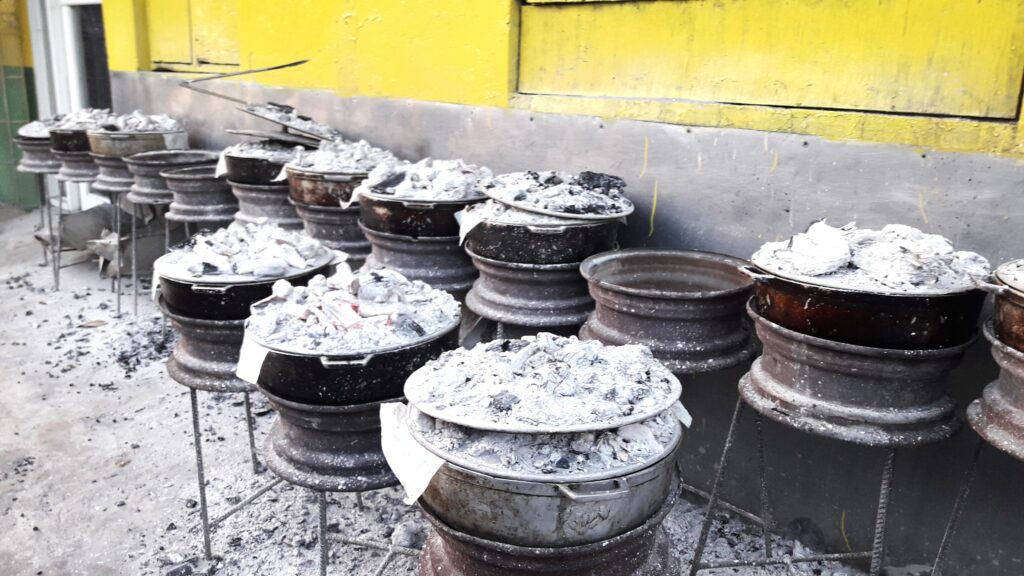Jamaica’s culinary journey reflects a beautiful blend of influences, from the indigenous Tainos’ barbecue traditions to the modern embrace of Western-style skillets. Yet, amidst this evolution, a cherished heritage simmers on: the Jamaican Dutch pot, a cast-iron wonder that transcends trends and generations.
A Legacy Forged in Fire and Time

Cast iron cookware boasts a rich history dating back to its invention in China around the 6th century BC. The basic manufacturing process remains remarkably unchanged, with molten iron poured into unique sand molds, ensuring each pot’s individuality. This enduring material’s remarkable heat retention and weight make it the ideal partner for high-heat cooking techniques like searing and frying. Imagine perfectly pan-seared steaks or evenly crisped saltfish fritters emerging from your Dutch pot, a testament to its timeless culinary prowess.
Beyond the Stovetop: Versatility Unbound

The Jamaican Dutch pot isn’t confined to stovetop mastery. Its versatility shines in the oven, transforming humble potato pudding into golden delights. This process is described by locals as ‘Hell ah top, hell ah bottom and hallelujah in the middle.’ Meaning there is hot coal placed on the top and bottom of the pot and inside the pot is the delectable potato pudding.
Durability that Stands the Test of Time
Cast iron’s legendary durability is no myth. In Jamaican households, Dutch pots are often heirlooms, seasoned over time and imbued with generations of culinary memories. With proper care, these trusty companions can grace your kitchen for years to come.
Unlocking the Secrets of Seasoning
The magic lies in the “seasoning” – a layer of polymerized oil and carbon residue built up through regular use. This creates a naturally non-stick surface, eliminating the need for harsh chemicals. Remember, soap and steel wool are enemies here, as they strip away the precious seasoning. New techniques pre-season Dutch pots during manufacturing, offering a smooth, ready-to-use surface.
The Art of Caring for Your Cast Iron Companion

While seemingly indestructible, Dutch pots require proper care to maintain their magic. Avoid washing or soaking them. Instead, Heather Little White stated in the Gleaner, while still warm, rinse away food particles under running water. Be careful when holding the pot handle, we recommend using Oven mitts. Meticulous drying is crucial, which can be done with a rag. To further protect and enhance the seasoning, apply a thin layer of vegetable oil and buff it using paper towels.
Revitalizing Your Dutch Pot: The Art of Re-seasoning
Over time, accumulated grime or improper storage might necessitate a good old-fashioned seasoning refresh. Here’s how:
- Pour 1/4 inch of oil into the pot and heat over medium heat for five minutes.
- Remove from heat and add 1/2 cup of coarse salt.
- Scrub the pan with a wad of paper towels to loosen any food or rust.
- Rinse under hot water and dry thoroughly.
Weight: A Minor Hiccup, Easily Addressed
The undeniable weight of cast iron can pose a challenge for some, especially when maneuvering tasks like flipping omelets or pouring sauces. Thankfully, modern Dutch pots often incorporate helper handles alongside the main handle, enhancing ease of use.
A Culinary Gem Beyond Compare
The Jamaican Dutch pot, with its unwavering heat retention, versatility, and legendary durability, transcends trends. When seasoned and cared for with love, it becomes more than just cookware; it transforms into a cherished heirloom, whispering stories of culinary traditions and promising countless more to come. So, ditch the non-stick fads and embrace the timeless magic of the Dutch pot – your taste buds and future generations will thank you. It is also advised to always use Oven mitts when holding the handles of the dutch pot.





